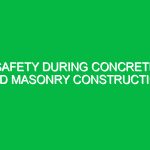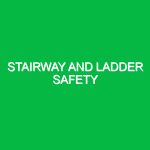When you think about construction sites, you might picture towering cranes lifting heavy loads high into the sky. But did you know that cranes and hoists can be dangerous if not used correctly? Ensuring Crane and Hoist Safety in Construction is crucial to keep workers safe and meet Health, Safety, and Environmental (HSE) standards.
Importance of Crane and Hoist Safety in Construction
Crane and Hoist Safety in Construction is essential for many reasons. Firstly, it helps protect the health and safety of workers. Cranes and hoists lift heavy loads, and if something goes wrong, workers can get seriously hurt or even killed. Secondly, following safety practices helps avoid damage to expensive equipment and materials. Lastly, maintaining safety standards ensures that construction projects run smoothly and on time, which is good for everyone involved.
All Hazards Associated with Crane and Hoist Safety in Construction
Understanding the hazards and risks associated with cranes and hoists is the first step towards preventing accidents. Here are some common hazards:
- Overloading: Lifting loads that exceed the crane or hoist’s capacity can lead to equipment failure.
- Falling Loads: Improperly secured loads can fall, causing injuries or fatalities.
- Electrical Hazards: Cranes coming into contact with overhead power lines can cause electrocution.
- Mechanical Failures: Faulty or poorly maintained equipment can malfunction.
- Environmental Factors: Wind, rain, and other weather conditions can affect crane operations.
- Human Error: Lack of training or careless operation can lead to accidents.
Safety Precautions for Crane and Hoist Safety in Construction
To prevent accidents and ensure safety, several precautions should be taken:
- Inspection: Regularly inspect cranes and hoists to ensure they are in good working condition.
- Load Limits: Always adhere to the maximum load capacity of the equipment.
- Securing Loads: Ensure that loads are properly secured before lifting.
- Distance from Power Lines: Maintain a safe distance from overhead power lines.
- Weather Monitoring: Check weather conditions and avoid operating cranes in extreme weather.
- Clear Communication: Use signals and radios to communicate clearly among the team.
Regulations and Standards Governing Crane and Hoist Safety in Construction
Several regulations and standards are in place to ensure Crane and Hoist Safety in Construction. These include:
- OSHA Standards: The Occupational Safety and Health Administration (OSHA) sets rules for crane and hoist safety in the United States.
- ANSI/ASME Standards: The American National Standards Institute (ANSI) and the American Society of Mechanical Engineers (ASME) provide guidelines for safe crane operation.
- Local Regulations: Various countries and regions have their own safety regulations that must be followed.
Tools and Equipment Associated with Crane and Hoist Safety in Construction
Several tools and equipment are essential for safe crane and hoist operations:
- Load Indicators: Devices that show the weight of the load being lifted.
- Safety Latches: Mechanisms that prevent loads from slipping off hooks.
- Signal Devices: Horns, bells, or visual signals to alert workers.
- Weather Monitoring Tools: Instruments to monitor wind speed and weather conditions.
Training and Education Regarding Crane and Hoist Safety in Construction
Training and education are vital for ensuring Crane and Hoist Safety in Construction. Workers should receive proper training on:
- Equipment Operation: How to operate cranes and hoists safely.
- Safety Protocols: The importance of following safety procedures.
- Emergency Procedures: What to do in case of an emergency.
Personal Protective Equipment (PPE) Required for Crane and Hoist Safety in Construction
Wearing the right Personal Protective Equipment (PPE) is crucial for safety. The necessary PPE includes:
- Hard Hats: Protects the head from falling objects.
- Safety Glasses: Shields the eyes from debris.
- Gloves: Protects hands from injuries.
- Steel-Toed Boots: Protects feet from heavy objects.
- High-Visibility Vests: Makes workers easily visible.
Emergency Preparedness for Crane and Hoist Safety in Construction
Being prepared for emergencies is essential. Here’s how to prepare:
- Emergency Plans: Have a clear emergency plan in place.
- First Aid Kits: Ensure first aid kits are available and stocked.
- Emergency Drills: Conduct regular emergency drills to practice procedures.
- Communication: Ensure everyone knows how to contact emergency services.
Workplace Design and Crane and Hoist Safety in Construction
The design of the workplace can impact safety. Here are some design considerations:
- Clear Pathways: Ensure pathways are clear of obstacles.
- Safe Zones: Designate safe zones where workers can stay clear of crane operations.
- Proper Lighting: Ensure the site is well-lit for visibility.
- Signage: Use signs to warn of potential hazards.
Conclusion
Crane and Hoist Safety in Construction is vital for protecting the health and safety of workers, ensuring smooth project operations, and complying with regulations. By understanding the hazards, following safety precautions, using the right tools and equipment, and ensuring proper training and PPE, we can create a safer construction environment. Always be prepared for emergencies and consider workplace design to further enhance safety.


